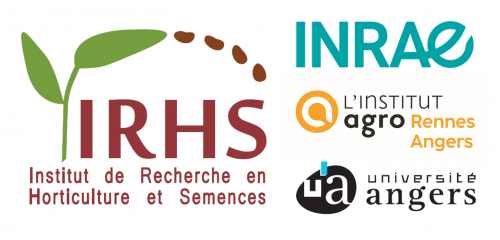Inheritance of garden rose architecture and its association with flowering behaviour
Résumé
Understanding the genetic basis of plant architecture is limited for woody plants due to the challenges of assessing the inheritance of their complex architecture. We aimed to evaluate the genetic variability of plant form and stature in a garden rose population, analyse the inheritance of plant architecture and its linkage with flowering behaviour and identify the quantitative trait loci (QTLs) controlling garden rose architecture. A total of 98 F 1 hybrids were derived from the cross between two diploid roses, The Fairy (TF) and Rosa × wichurana (RW) that differed in stature and flowering behaviour. The TF exhibits continuous flowering (CF) and has erect stature. The RW is once flowering (OF) and prostrate in stature. Three clones per genotype were multiplied, and a total of 300 plants were cultivated in a field. Flowering behaviour, plant form, plant height, stem diameter and internode length were scored during each of 2 years. All architectural traits had significant genetic variances (29–61 % of their respective phenotypic variances), and their broad-sense heritability estimates were 0.76–0.92. The majority of CF progeny was erect, whereas the OF progeny was prostrate, suggesting a linkage between plant form and flowering behaviour. The QTL analysis identified eight major QTLs controlling architectural traits. Several candidate genes involved in gibberellin biosynthesis and auxin signalling were identified in the vicinity of the QTLs. High heritability estimates obtained for garden rose architecture indicated that architectural characteristics are feasible targets of rose breeding. Linkage of plant form and flowering behaviour, however, prevents independent selection of these traits. The candidate genes identified can be good targets for future physiological studies.
